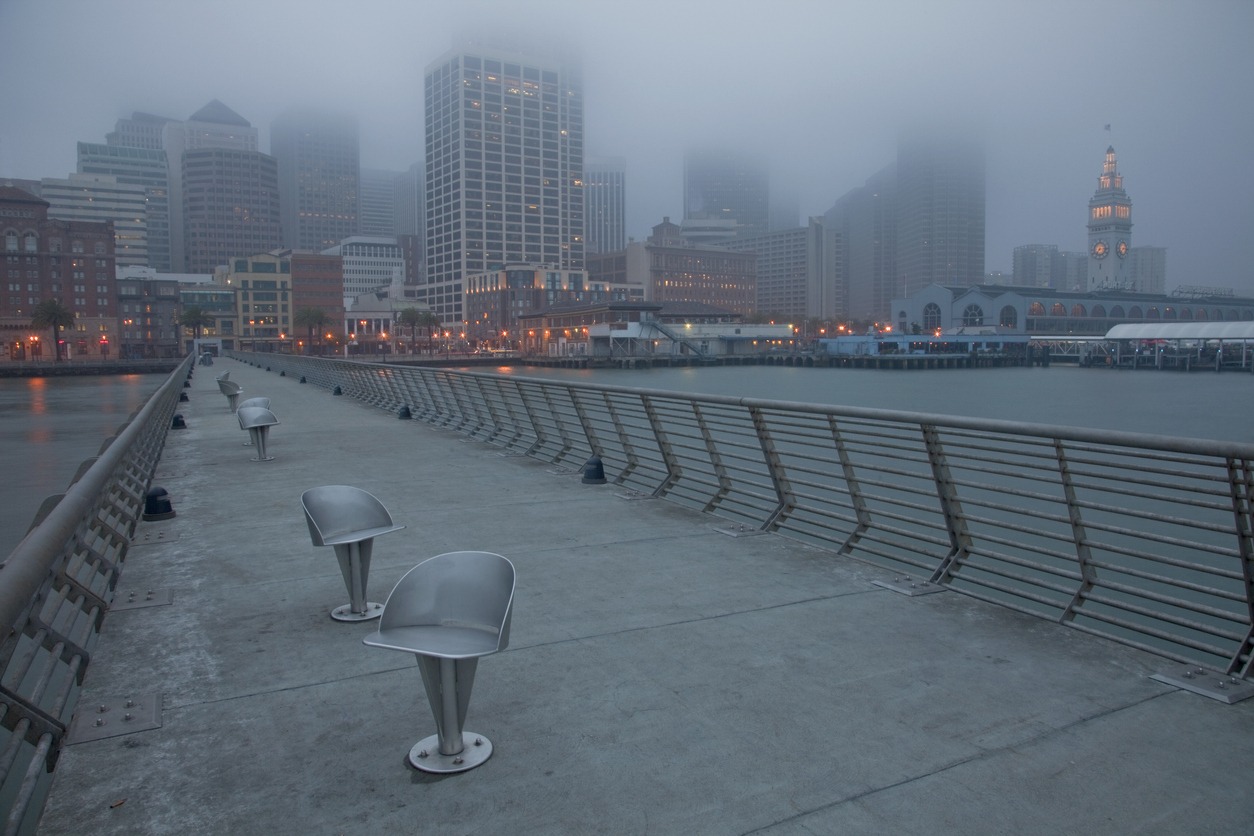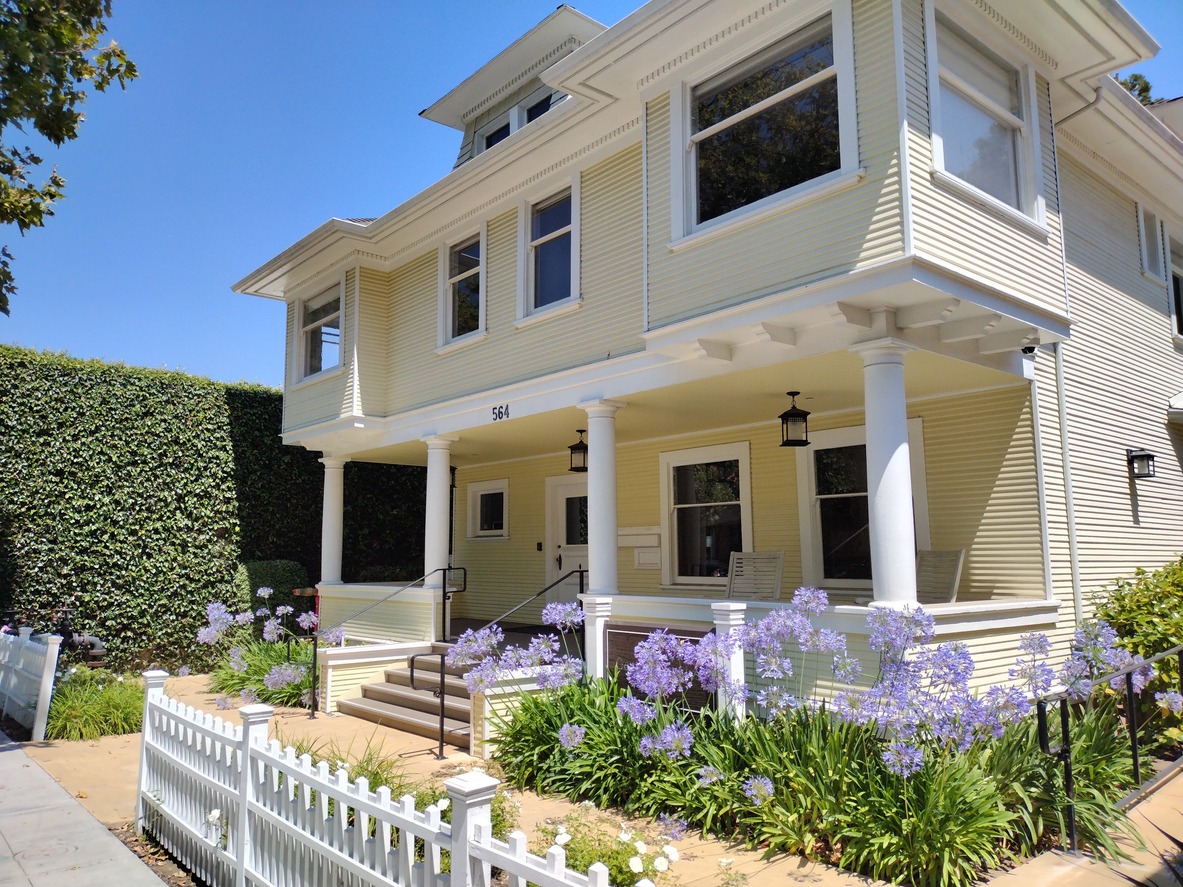In exterior painting, climate and seasons are vital in its speed and efficiency. Here in California, you can paint outside any time of the year – spring, summer, and autumn. Many people swear that fall is the best time for exterior painting.
Exterior painting is even doable during the winter in California. That said, you should be aware of the limitations of painting outside during this season. Know and understand how low temperatures can affect several factors of exterior painting during the winter in California. These factors include the paint’s ability to adhere to the surface and drying time.
Learn more about navigating through the challenges of California’s winter while doing exterior painting.
Winters in California: a brief overview
Due to its expansive land area, California experiences winters differently depending on the region. Coastal areas and Southern California typically experience mild and wet winters with temperatures ranging from 50°F to 65°F. Inland and northern regions can see colder temperatures, occasionally dropping to freezing, and higher elevations, like the Sierra Nevada mountains, receive substantial snowfall.
The challenges of exterior painting in California winter
Painting the exterior of a building during the winter in California presents several challenges, even though California typically has milder winters compared to many other regions. Here are some key challenges:
1. Temperature fluctuations
- Cold temperatures: Paints have specific temperature ranges within which they can be applied effectively. Low temperatures can cause your paint to thicken, making it difficult to apply smoothly. The low temperatures can also impede the curing process, leading to a less durable finish.
- Day-night variations: In some parts of California, the temperature can drop significantly at night. It can affect your paint’s drying process, potentially leading to poor adhesion and longer drying times.
2. Moisture and humidity
- Rain: Winter is part of the rainy season in California, particularly in regions like Northern California. Rain can wash away fresh paint or cause it to streak and not adhere properly.
- Dew and fog: High humidity and morning dew can interfere with paint adhesion and curing. Fog, common in coastal areas, can add extra moisture to surfaces, leading to problems with paint sticking and drying.
3. Wind
- Wind can blow dust, debris, and dirt onto wet paint, causing imperfections. It can also make spraying applications more challenging and uneven.
4. Limited daylight
- Shorter days in winter mean less available time to paint in optimal conditions. This can extend the overall project timeline.
5. Surface preparation
- Surfaces must be dry before painting, which can be harder to ensure in the winter due to higher humidity, dew, or frequent rain.
6. Paint formulations
- Not all paint formulations are suitable for colder temperatures. Winter may require special cold-weather paints, which can be more expensive and have different application properties.
7. Contractor availability
- While there might be less demand for exterior painting in winter, which can lead to better availability of painters, the seasonal challenges might mean some contractors are less willing to take on exterior projects or might charge more.
Exterior painting in California during winter
Again, exterior painting in California is doable during the winter. However, there are several important considerations to ensure a successful project:
1. Weather conditions:
- Temperature: Paint manufacturers often recommend painting when temperatures are between 50°F and 85°F. California’s winter temperatures, especially in coastal and southern regions, generally fall within this range, making it feasible to paint.
- Humidity: High humidity can affect paint drying times and adhesion. Winter rains in California can increase humidity levels, so it’s crucial to choose a dry day for painting.
- Rain: Avoid painting on rainy days or when rain is forecasted soon after. Even in California’s milder climates, winter rains can be frequent.
2. Paint type:
- Use paints specifically designed for lower temperatures if you work in the cooler regions of California. These paints contain additives that help them cure even when it’s cold.
3. Preparation:
- Surface preparation: Ensure surfaces are dry and clean before painting. Moisture on surfaces can prevent paint from adhering well.
- Timing: Start painting late in the morning to allow surfaces to dry out from overnight moisture and stop early enough to let the paint begin to dry before evening dew sets in.
4. Drying times:
- Colder temperatures and higher humidity levels can extend drying times. Be prepared to allow extra time for each coat of paint to dry.
5. Sunlight:
- Take advantage of sunny days, which are more common in Southern California during winter. Sunlight can help with paint curing and drying.
6. Professional advice:
- Consult with local paint suppliers or professionals familiar with California’s winter conditions. They can provide specific recommendations for paint products and techniques suited to your area.
Some tips for winter exterior painting in California
- Choose the right paint: Use paint specifically formulated for lower temperatures.
- Monitor weather forecasts: Plan painting projects during dry, mild weather windows.
- Start late, finish early: Paint during the warmest part of the day to maximize the efficient working time.
- Prepare surfaces properly: Ensure surfaces are clean, dry, and moisture-free before painting.
- Cover and protect: Use tarps and covers to protect the area from unexpected rain or overnight moisture.
You should address these challenges and plan accordingly. Doing so enables you to complete exterior painting projects in California during the winter.
Paint recommendations
Painting your home’s exterior during a mild winter in California requires choosing the right type of paint. This way, you can ensure durability and a smooth finish despite the cooler temperatures. Here are some key considerations and recommendations for the best types of paint:
Key considerations:
- Temperature tolerance: Ensure the paint can be applied at lower temperatures, typically above 35-50°F (1.5-10°C).
- Moisture resistance: Winter can increase moisture, so choose paints that resist mildew and mold.
- Drying time: Cooler temperatures slow the drying process, so plan for extended drying times between coats.
Recommended types of paint:
- Acrylic latex paint: This is an excellent choice for exterior painting in mild winters. It is durable, flexible, and can be applied in temperatures as low as 35°F (1.5°C). It also resists cracking and peeling.
- Low-temperature latex paint: Some manufacturers produce latex paints formulated for low-temperature applications. These paints can be applied in temperatures down to 35°F (1.5°C) and sometimes lower.
- Water-based acrylic paints: These paints are also suitable for exterior use in cooler temperatures. They provide good adhesion and flexibility, which helps prevent cracking in varying temperatures.
Recommended brands:
- Sherwin-Williams Duration® Exterior Acrylic Latex: Known for its durability and excellent performance in low temperatures.
- Benjamin Moore Aura® Exterior Paint: Offers excellent coverage and can be applied in cooler temperatures.
- Behr Premium Plus Ultra® Exterior Paint and Primer in One: Provides good mildew resistance and can be applied at lower temperatures.
Application tips
- Check the weather: Ensure there’s no rain expected for at least 24-48 hours after application. You should maintain the ideal temperature range throughout the day and night.
- Surface preparation: Properly clean and dry surfaces before painting to ensure the paint adheres well.
- Follow manufacturer instructions: Pay close attention to the specific application guidelines provided by the paint manufacturer regarding temperature and drying times.
- Use quality brushes and rollers: High-quality tools help achieve a smoother finish and better paint coverage.
Conclusion
Exterior painting in California during the winter is generally feasible due to the state’s mild winter climate, especially in southern and coastal regions. However, it is essential to consider weather conditions such as rain, humidity, and temperature fluctuations to ensure proper drying and adhesion of the paint. Proper planning and choosing suitable weather windows can lead to successful exterior painting projects even during the cooler months.
Custom Painting, Inc. can help you make sound decisions about exterior house painting during the challenging winter months. Our paint crew is always available for your painting and light carpentry projects, no matter the season! For more advice on completing your winter painting projects, give us a call at 925-294-8062 or send us a message here.



